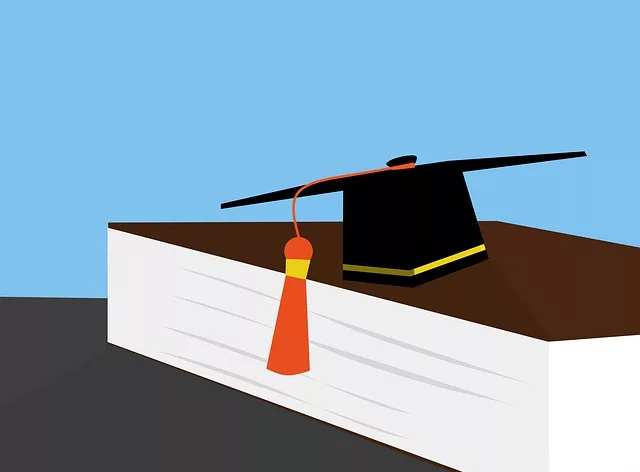Your Ultimate GI Bill Benefits Guide

What Is the GI Bill?
The GI Bill® is a military education benefits program operated by the Department of Veterans Affairs. It can be used by qualifying military members and may be transferred to spouses and college-age children of the service member.
The GI Bill was initially known as the Servicemen’s Readjustment Act of 1944, commonly referred to at the time as the GI Bill of Rights.
The first GI Bill had features we don’t see today; unemployment insurance and federal housing benefits in the form of the VA loan. All that was offered in addition to military GI Bill funds for education.
How the Supreme Court Changed GI Bill Benefits for Some Veterans
The Rudisill Decision, a Supreme Court ruling in April 2024, changed GI Bill benefits for qualifying veterans with more than one tour of duty. Nine years in the making, this decision was a case brought by veteran James Rudisill and has significant implications for how veterans can access and utilize GI Bill benefits:
- Retroactive Benefits: Veterans previously denied the opportunity to use both GI Bills may now be eligible for additional education benefits. The VA is actively working to identify and notify these individuals.
- Increased Flexibility: Going forward, veterans who serve in multiple periods and qualify for both GI Bills can choose how they utilize their benefits. This opens up more educational pathways and provides greater financial support for their post-military endeavors.
Learn more about the Rudisill decision and how it may affect your GI Bill benefits.
GI Bill Education Benefits
Post-9/11 GI Bill Benefits
- Tuition and fees: Those who qualify for 100% of the GI Bill are covered for “the full cost” of public, in-state tuition and fees. The Department of Veterans Affairs establishes annual limits for private and foreign school rates.
- Housing stipend: The VA pays a housing allowance for those attending more than half-time. The amount varies but is paid according to the zip code where you take most of your classes.
- Money for books/supplies.
- Relocation assistance: The VA offers a one-time payment “if you live in a county with 6 or fewer people per square mile and you’re either moving at least 500 miles to go to school or have no other option but to fly by plane to get to your school.”
Read more: Am I Eligible for VA Education Benefits?
Post-9/11 GI Bill BAH Calculator
Montgomery GI Bill Benefits
The Montgomery GI Bill offers monthly tuition payments based on two factors:
- The type of education or training
- How many courses you’re taking
Some students get less than the full rate each month. This occurs when:
- You’re enrolled less than full-time, or
- Your clock hours per week are less than full-time, or
- You’re getting on-the-job training, or
- You’re in an apprenticeship program, or
- You’ve served on active duty for less than three continuous years
Some may qualify for more than the maximum; this is true when you have a “kicker” for the GI Bill or you opt-in to the $600 Buy-Up program; you may get more money each month than the full-time enrollment rate.
VA.gov advises, “We’ll add the kicker or buy-up amount to your monthly payment.”
Related: Military Allowances Guide
What GI Bill Do I Have? Navigating the Path to Your GI Bill Benefits
Depending on when the servicemember joins, there may be eligibility for both the Montgomery GI Bill and the Post-9/11 GI Bill.
Some may experience confusion over this, especially after the passage of legislation known as the Forever GI Bill, which is not a separate program but rather a set of reforms and upgrades to the GI Bill overall.
Related: How the Forever GI Bill Changed Your Military Education Benefits
Which GI Bill you have depends on the service era you joined in, and other factors. You can learn more about determining which version of the GI Bill you have, and if you have not made a selection, consider your best option using the VA GI Bill Comparison Tool or CollegeRecon’s School Finder.
Who Is Eligible for the Post-9/11 GI Bill?
You may be eligible for Post-9/11 GI Bill benefits if you have been on active duty for at least 90 days after September 10, 2001.
Related: How to Check GI Bill Status
Who Is Eligible for the Montgomery GI Bill?
If you served on active duty, you may qualify for the Montgomery GI Bill-AD. You must have served at least 24 months on active duty and meet certain requirements, including having a high school diploma or GED OR 12 hours of college credit.
Read more: The Montgomery GI Bill for Active Duty (MGIB-AD)
You must also have an Honorable discharge and meet “other requirements.” There are multiple categories of eligibility. They include but are not limited to the following.
Category 1
- The applicant has a high school diploma, GED, or 12 hours of college credit;
- Entered active duty for the first time after June 30, 1985;
- Paid into the GI Bill at $100 a month for the first 12 months of service;
- Served continuously for between two and four years, depending on circumstances.
Category 2
- The applicant has a high school diploma, GED, or 12 hours of college credit;
- Generally entered active duty before January 1, 1977;
- Served at least a single day between October 19, 1984, and June 30, 1985, and stayed on active duty through June 30, 1988.
Category 3
- You don’t qualify for MGIB under categories I or II;
- You paid into the program ($1,200) before separation;
- Applicant served on active duty on September 30, 1990, and involuntarily separated after February 2, 1991;
- You involuntarily separated on or after November 30, 1993;
- You chose to voluntarily separate under either the Voluntary Separation Incentive (VSI) program;
- You chose to separate via Special Separation Benefit (SSB) program;
Category 4
- The applicant has a high school diploma, GED, or 12 hours of college credit;
- Applicant contributed to the program ($100 a month for 12 months or made a $1,200 lump-sum contribution;
- On active duty on October 9, 1996, had money left in a VEAP account on that date, and chose MGIB before October 9, 1997;
- Full-time National Guard duty under title 32, USC, between July 1, 1985, and November 28, 1989, and opted into the MGIB program between October 9, 1996, and July 9, 1997.
Read more: Military Benefits Guide: Guard and Reserve
Am I Eligible for the Montgomery GI Bill Selected Reserve?
The following may qualify for VA education benefits through MGIB-SR:
- Army Reserve
- Navy Reserve
- Air Force Reserve
- Marine Corps Reserve
- Coast Guard Reserve
- Army National Guard
- Air National Guard
Each of the following must apply:
- You have a 6-year service obligation in the Selected Service OR;
- You are an officer in the Selected Reserve serving 6 years (that is in addition to your initial service obligation) AND;
- You meet what the VA calls “ other requirements,” which may include finishing initial active duty for training (IADT), and you are in good standing in a Selected Reserve Unit.
Related: GI Bill 90/10 Law Modified to End For-Profit College Loophole
Using GI Bill Benefits
You can use the GI Bill to pay for education in several ways, including non-traditional options such as flight training or apprenticeships. The rules for each vary depending on the program and the type of training you seek.
Related: When Does the GI Bill Expire?
GI Bill Benefits for State and Private Colleges
VA.gov reminds that you can use the GI Bill to pay for school or training at both state supported schools and participating private institutions. “You may also be eligible for money to help pay for housing, books, and supplies while you study” at a state or private school participating in the GI Bill program. Not all schools are authorized.
Related: GI Bill STEM Extension
GI Bill Benefits for Flight School
The GI Bill pays for certain types of approved flight training programs, including rotary-wing and dual-engine programs. You can also use the GI Bill in this way to pay for flight engineer training.
Read more: Using the GI Bill for Flight School
GI Bill Benefits for Non-Degree Certificate Programs
You may be able to use the GI Bill for non-college options such as certification for HVAC, Emergency Medical Technician training, barber and beauty school, etc.
Read more: GI Bill for Non-College Degree Programs
OJT: Earning While Learning in Your New Career
The GI Bill can be used for non-traditional employment training programs, including on-the-job training and apprenticeships. GI Bill training programs can help veterans with the cost of books, supplies, and housing while learning in this way.
Read more: Using the GI Bill for On-the-Job Training
Using the GI Bill at an Overseas School
VA.gov says it may be possible to use the GI Bill overseas if you meet the VA requirements to so. They include the following:
- You must be eligible for “VA educational assistance as a Veteran, service member, Reservist, or qualified dependent.”
- You must be attending a VA-approved program.
- Your program must award “a standard associate degree or higher, or a degree of equal value at that foreign school.”
- The VA also provides exceptions for those eligible for Survivors’ and Dependents’ Educational Assistance “while in approved postsecondary (after high school) non-college degree programs at training locations in the Philippines.”
- Schools based in the USA but with overseas campuses do not qualify as “overseas schools.”
- For approval to attend private schools overseas, the degree offered “must be of equal value to those granted by public colleges and universities in the same country, and the school must have the same entrance requirements,” according to VA.gov.
Post-9/11 GI Bill Housing Allowance
The GI Bill Housing Allowance is paid to those who use the Post-9/11 GI Bill program. It is paid based on your attendance (full or part-time) and the zip code of the location where you attend most of your classes. The Montgomery GI Bill does not offer a housing allowance of any kind.
VA.gov states that those eligible get the allowance at the end of each academic month. “We’ll pay you a percentage of the full monthly housing allowance,” also known as a prorated payment based on:
- The percentage of Post-9/11 GI Bill benefits you qualify for
- The number of college credits you take or the hours you attend per week.
- If you’re taking only online classes, the VA agrees to pay a housing allowance half the national average.
Those using the GI Bill for flight training or correspondence courses do not qualify for the housing allowance.
Related: How the Forever GI Bill Changed Your Education Benefits
How the GI Bill Housing Allowance Works
The Post-9/11 GI Bill BAH monthly housing allowance is the same as the Basic Allowance for Housing (BAH) for an E-5 with dependents. It is paid only when the student attends classes, so the allowance is prorated.
If you attended school for 20 days out of a 31-day calendar month, your housing allowance is calculated using the 20 days, not the entire month.
Read more: Can I Use GI Bill Income for a Mortgage?
GI Bill Benefits for Active Duty and Veterans
Some mistakenly assume all GI Bill benefits are different for active duty service members compared to veterans.
For the most part, GI Bill options are the same whether you are currently serving, retired, or separated. But there are some exceptions. For example, if you serve on active duty and use the GI Bill, you are not paid a monthly housing allowance for the GI Bill the way others are.
Why?
Because in typical cases, the servicemember is already being paid a housing allowance as part of the student’s military duties.
Federal law prohibits “double dipping” or payment of the same benefit to the same person twice. You can’t draw two military housing allowances at the same time when attending college using the GI Bill.
Read more: Veteran Education Benefits Guide
Can I Transfer My GI Bill Benefits?
Here is another way active duty GI Bill benefits differ from Veteran GI Bill benefits. If you are a veteran, you do not have the ability to transfer your GI Bill to a spouse or college-age dependent.
Transferring the GI Bill requires the service member to be on active duty and agree to a new military service commitment in exchange for the transfer. If you can’t reenlist, you can’t transfer your GI Bill.
Read more: How to Transfer GI Bill Benefits
Veteran Readiness and Employment
If you have a service-connected disability, you may qualify for additional VA education benefits through a program called Veteran Readiness and Employment (formerly called Vocational Rehabilitation and Employment), also known as Chapter 31 benefits.
Veterans and certain qualifying active-duty military members may be eligible for this program. For veterans, you must have a service-connected VA disability rating of at least 10%, and you must not have a Dishonorable discharge.
For those still on active duty, you may be eligible for VR&E with a 20% or higher pre-discharge disability rating “and will soon leave the military,” according to VA.gov, or you are waiting to be discharged “because of a severe illness or injury that occurred while you were on active duty.”
Read more: Veterans’ Readiness and Employment Program (VR&E)
GI Bill Benefits for Guard and Reserve
There are differences in the GI Bill benefits for members of the Guard and Reserve compared to what’s offered to active duty service members. Which GI Bill is better? That depends greatly on the individual, but there are some important differences to be aware of.
Read more: Comparing GI Bill Benefits: Active Duty vs. Guard/Reserve
GI Bill Benefits for Spouses and Dependents
The Post-9/11 GI Bill may be transferred to a spouse or college-age dependent child. You can even transfer benefits to more than one person in your immediate family. However, transferring the GI Bill is only allowed for the Post-9/11 GI Bill, and you must complete the transfer while still serving on active duty.
When you transfer the GI Bill, you give your spouse or children access to the same GI Bill benefits you have, including money for up to 36 months of:
- Tuition
- Housing
- Books and supplies
- Fees for national standardized tests
- Fees for licensing and certifications
Read more: How to Transfer the Post-9/11 GI Bill
Extending Your GI Bill Benefits
There are many ways to extend your GI Bill benefits. One way to do that is to avoid using the GI Bill while on active duty in favor of Tuition Assistance programs each military branch offers.
These programs are meant to help active-duty troops start or continue higher education without having to tap into their GI Bill benefit.
Read more: Military Tuition Assistance
GI Bill Yellow Ribbon Program: Bridging the Gap for Higher Education Costs
The Yellow Ribbon Program allows qualifying veterans and dependents to offset higher private school, overseas school, or graduate tuition and fees.
Participating colleges offer the Yellow Ribbon Program to those who qualify for the Post-9/11 GI Bill.
- Not all schools participate in the Yellow Ribbon Program, so your first step as a prospective student is to learn whether your selected school will provide Yellow Ribbon funds and how much.
- The Yellow Ribbon option pays after the GI Bill; it is not a replacement or alternative to the GI Bill.
- You must apply for this program when you are accepted to the school of your choice; only then can the admissions office work with you to get Yellow Ribbon funds added to your financial aid package.
The Yellow Ribbon Program can be used for graduate school and undergraduate studies.
In general, to qualify for the Yellow Ribbon option, you must fall into one of the following categories:
- You served at least 36 months on active duty with an Honorable discharge;
- You received a Purple Heart on or after September 11, 2001, and were honorably discharged;
- You served 30 continuous days on or after September 11, 2001, and were discharged for a service-connected disability;
- You’re a dependent using transferred benefits;
- You’re a Fry Scholar;
- You’re an active-duty service member who qualifies at the 100% level;
- You are a spouse using transferred GI Bill benefits.
The participating school, not the VA, decides if new applicants can be admitted and how much Yellow Ribbon funding is available to use in a given semester or term.
Read More: The Yellow Ribbon Program
The Marine Gunnery Sergeant John David Fry Scholarship
On March 8, 2006, Marine Gunnery Sgt. John D. Fry was killed in action by an IED in Anbar Province, Iraq. The Marine Gunnery Sergeant John David Fry Scholarship was created in his name to honor his sacrifice in the line of duty.
Fry Scholarships are offered to qualifying children and spouses of service members who died in the line of duty. Fry scholars may qualify for up to 36 months of education benefits if they are survivors of one of the following:
- Active-duty service members who died in the line of duty on or after September 11, 2001;
- Selected Reserve members who died from a service-connected disability on or after September 11, 2001.
Eligible surviving spouses do not have a time limit to apply for a Fry Scholarship but cannot apply once remarried. Dependent children become eligible on their 18th birthday.
Some students may wish to apply for this program but have already enrolled; they should get help from their school’s Admissions department to complete VA Form 22-1999, Enrollment Certification, and have the school apply on the student’s behalf.
Read more: Who Qualifies for the Fry Scholarship?
eBenefits: Simplifying Your Education Benefits Management
Military members and veterans can use eBenefits to access military records and GI Bill history and manage Direct Deposit.
This online benefits management portal isn’t limited to the GI Bill; eBenefits provides “access to resources military members need to manage their education benefits, healthcare, retirement, and housing benefits,” according to the Department of Defense.
Using eBenefits requires a DS Logon account, an ID.me, or Login.gov account. You can log into eBenefits using any of those portals; one thing newcomers to the GI Bill should know is that you cannot initiate a GI Bill application with eBenefits; all links to GI Bill application information takes you to VA.gov.
Read more: Using eBenefits to Manage Your GI Bill
Resources
- GI Bill Facts and Fiction
- Is the GI Bill Taxable?
- How to Transfer GI Bill Benefits
- Am I Eligible for VA Education Benefits?
- Military Allowances Guide
- Using the GI Bill for Flight School
- How the Forever GI Bill Changed Your Military Education Benefits
- How to Check GI Bill Status
- Military Tuition Assistance
- The Montgomery GI Bill for Active Duty (MGIB-AD)
- Military Benefits Guide: Guard and Reserve
- When Does the GI Bill Expire?
- GI Bill STEM Extension
- GI Bill for Non-College Degree Programs
- Can I Use GI Bill Income for a Mortgage?
- Veteran Education Benefits Guide
- Veterans’ Readiness and Employment Program (VR&E)
- Comparing GI Bill Benefits: Active Duty vs. Guard/Reserve
- The Yellow Ribbon Program
- Who Qualifies for the Fry Scholarship?
About the author
Editor-in-Chief Joe Wallace is a 13-year veteran of the United States Air Force and a former reporter/editor for Air Force Television News and the Pentagon Channel. His freelance work includes contract work for Motorola, VALoans.com, and Credit Karma. He is co-founder of Dim Art House in Springfield, Illinois, and spends his non-writing time as an abstract painter, independent publisher, and occasional filmmaker.


